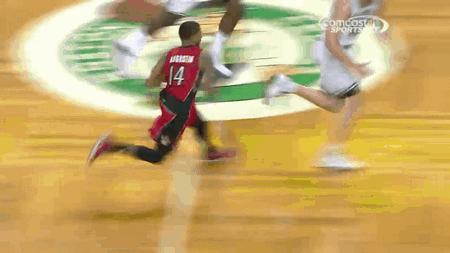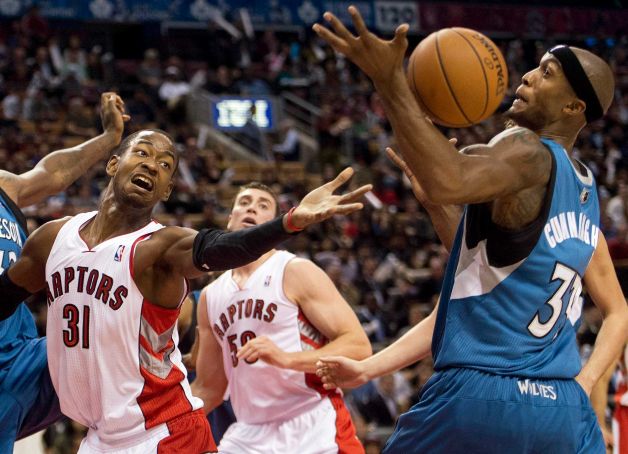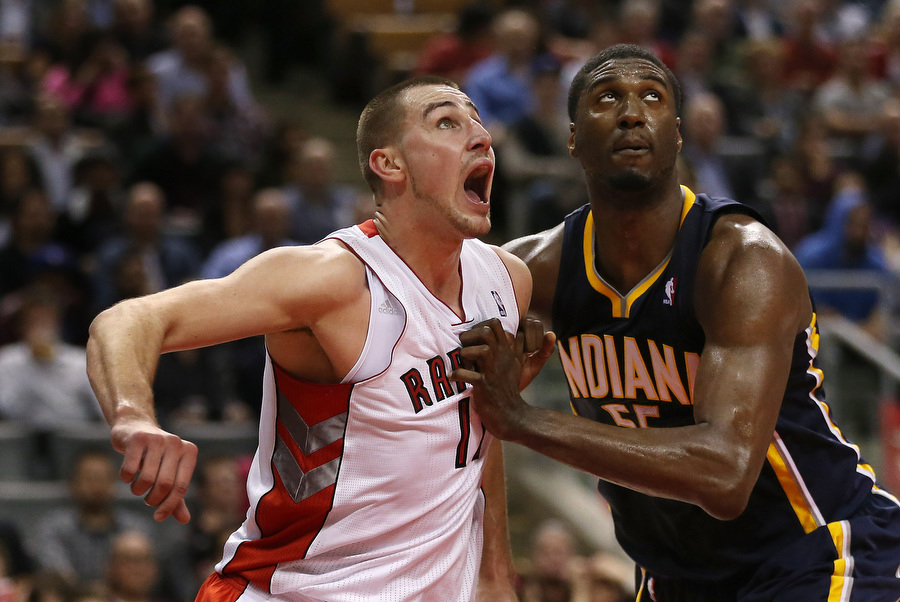What change can you believe in, and what change is just a mirage? Read on to find out what you can, and cannot take out of the NBA preseason.
As an avid Raptors Republican, I’m sure you’ve caught every single one of our preseason recaps (save for the latest Minnesota game that none of us saw because they played on Saturday night and we were too busy “champagening and campaigning”). If so, you’re probably tired of reading statements like the following:
“…but it is preseason so it gets a pass” – Zarar
“I should probably step back and acknowledge that it was still just a preseason game” – William
“…but with preseason games not holding a lot of value” – Blake
“However, it’s preseason, and 1,000 words is my minutes limit for a preseason game” – Blake
“Maybe I should preface this with the fact that it’s preseason…” – William
I mean, you’re all smart dudes, right? We don’t need to drill this point home in every other sentence we type, or at least you’d think we wouldn’t need to, but then something like this shows up, and we writers have to dig in our heels once again.
“… So I decided to take a look at 3 of our key players TS% during last years preseason, versus how they are doing 3 games into this current preseason.” – Primer (Raptors Republic Starter in the forums)
My goal here is not to chastise Primer (he himself said that “the preseason really doesn’t mean much”). My point is that we can’t read into the numbers of any three game samples, especially in the preseason. This idea isn’t new to most, and it isn’t likely to cause any paradigms to shift, but it cannot be understated.
But this entire ordeal does bring up an interesting question – what changes in the preseason can you, or can you not believe in from the preseason? What’s real, and what’s fake?
Definitely False: Coaching Schemes
Let me explain this one with the following fact; at one point during the game versus the Celtics, Dwane Casey put out a crunch time lineup of Buycks-Ross-Fields-Daye-Gray. Are you picking up what I’m putting down?
Preseason is a time for coaches to try out new schemes. What you’re seeing, even with established lineups like the starting-five, is endless experimentation and tinkering. That’s why guys like Landry Fields are doing a lot of ball-handling. That’s why Austin Daye is out there to play the four against guys like Kevin Love. That’s why you’re seeing funky lineups like the one mentioned above. It’s all just experimentation; the coaching staff and Masai Ujiri wants to see what might work, and what definitely doesn’t (like say a lineup of Buycks-Ross-Fields-Daye-Gray).
So please don’t slag coach Dwane Casey, or any members of the coaching staff for their decisions during the preseason. There’s more than a couple of new faces on the team this season, and everyone is just getting to know each other, and what they like. Basically, the preseason is like the first date; unless it was absolutely horrible, you’re probably going to call them again.
That being said, Dwane Casey trots out some terrible lineups and his players so rarely execute after a time-out.
Maybe False: Preseason Records
I complied the Raptors’ preseason win percentages and plotted them alongside their corresponding regular season winning percentages over the last 9 seasons. They are presented below:
Can you really spot a trend from this? Well, the Raptors have finished under their preseason win percentage in 7 out of their last 9 seasons, does that mean that the Raptors will do so this year, and into the future?
Well, no. First, a sample size of nine is hardly enough to form any conclusions. Second, these Raptors teams have, for the most part, been wildly different. Third, these numbers are descriptive, meaning they describe what’s happened in the past, but they are not predictive, meaning they don’t tell us what to expect in the future.
But studies have been conducted on the predictive power of preseason win percentage on regular season win percentage. The author, Roland Beach (now with the Dallas Mavericks), found that the correlation between the two percentages was 0.40 which suggests that preseason win percentage does hold some predictive power.
However, it should also be noted that previous season win percentage is a much better indicator of regular season win percentage, clocking in at 0.57, which is what you’d expect. I mean, what’s more likely – that the Raptors will win 75% of games this season (they’re 3-1 in the preseason), or that they’ll win closer to 42% of their games this season (34-48 last season)?
But hey, it’s not entirely meaningless. We know that preseason win percentage has some meaning, but we don’t know where specifically, or what contextual factors have to be present for it to be meaningful. Tread lightly.
Maybe False: Player/Team statistics
Fun fact:
The following Raptors players are currently shooting above 62% on field goals in the preseason thus far:
Tyler Hansbrough (62.5%)
Jonas Valanciunas (68.2%)
Quincy A-Three (83.3%).
The only player in the NBA to shoot better than 62% on field goals last year during the regular season (that qualified):
DeAndre Jordan (64.3%)
So yeah. Let’s not believe any of the numbers from preseason.
My point isn’t that the numbers are flawed – they simply are what they are. However, the numbers alone doesn’t tell the whole story, not by a long shot, and the matter of the small sample sizes introduces truckloads of randomness. It’s much better to look at the stats through the context of…
Maybe Real: Skill Changes/New Skills
The term “skill” is hopeless vague, but I could not find a better way to express the sentiment. If a player has shown something new, like say a post-game, then yeah, you can probably believe that these changes will carry over into the regular season. Consequently, if a player has a completely new form on his jumpshot, and he’s not making very many baskets, you probably have a licence to worry.
But again, we run into problems. The opposing team could be going small, thus making a certain someone’s post-game look more impressive than it actually is. Similarly, someone could be…nevermind, I give up. Fields’ jumpshot is what it is (read: broken, for the time being).
Whether these new developments carry into the regular season or not is interesting. We do know that the more a player flashes the new skills, the more likely they are to being true and believable, so keep on doing stuff like this, and this, DeRozan!
Definitely Real: Players Who Have A History of Not Been Very Good, and Are Still Not Very Good
Notables include: Austin Daye, Aaron Gray, DJ Augustin (reasons below).

Luckily, Buycks has no history in the NBA just yet. Come on, Dwight! Please tell me you’re better than that dude above!
Is Daye as bad as he’s shown in the preseason? Yes he is. He’s been playing out of position as a stretch four, especially on defense, but he hasn’t exactly showcased a world of effectiveness on offense either. The same applies for Aaron Gray and Darryl Gerald Augustine. For the most part, veterans are who they are. They have a few established skills and they keep getting hired to do those very same things. Until they can’t, Daye will always be asked to shoot, Gray will always be asked to be a gigantic version of Taco from The League and Augustin will always be asked to do…whatever it is that he does (spot-up shooting?).
So there you have it. Believe in skill changes, be sceptical of the numbers (unless there’s a good reason for them), don’t worry too much about the preseason record and please don’t chastize the coach for his strategies and lineups.
Oh, and enjoy the games. It’s all we’ve got before they start playing actual basketball.




